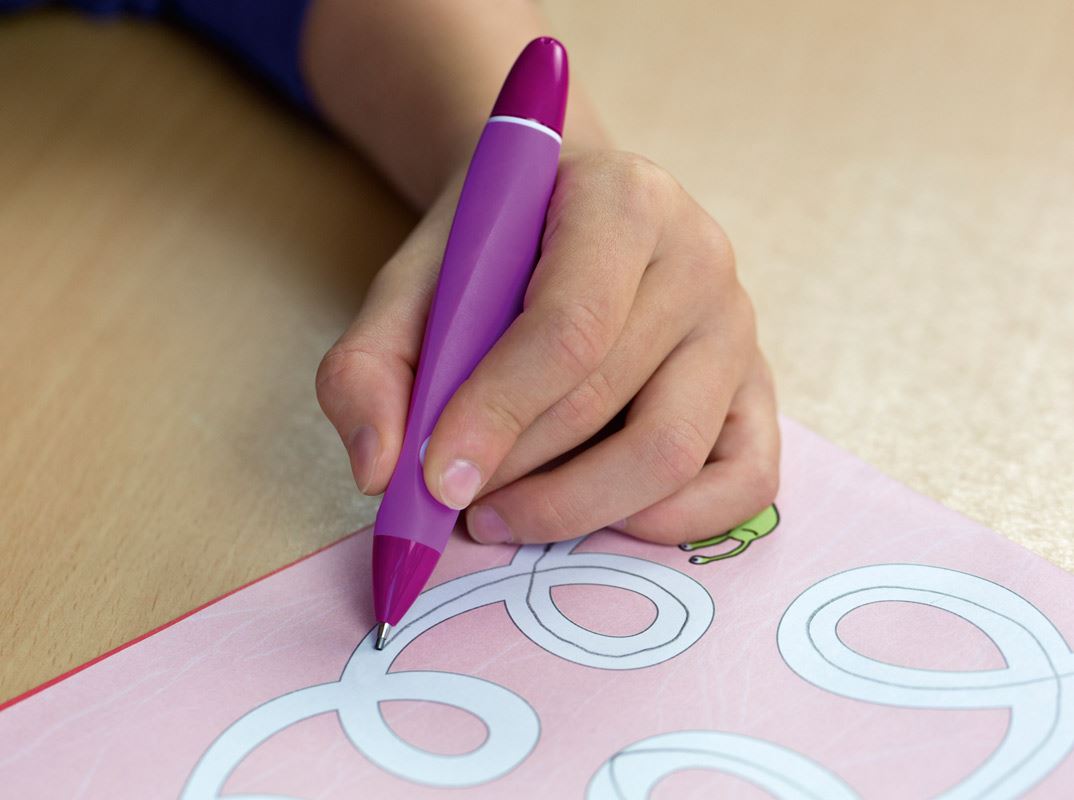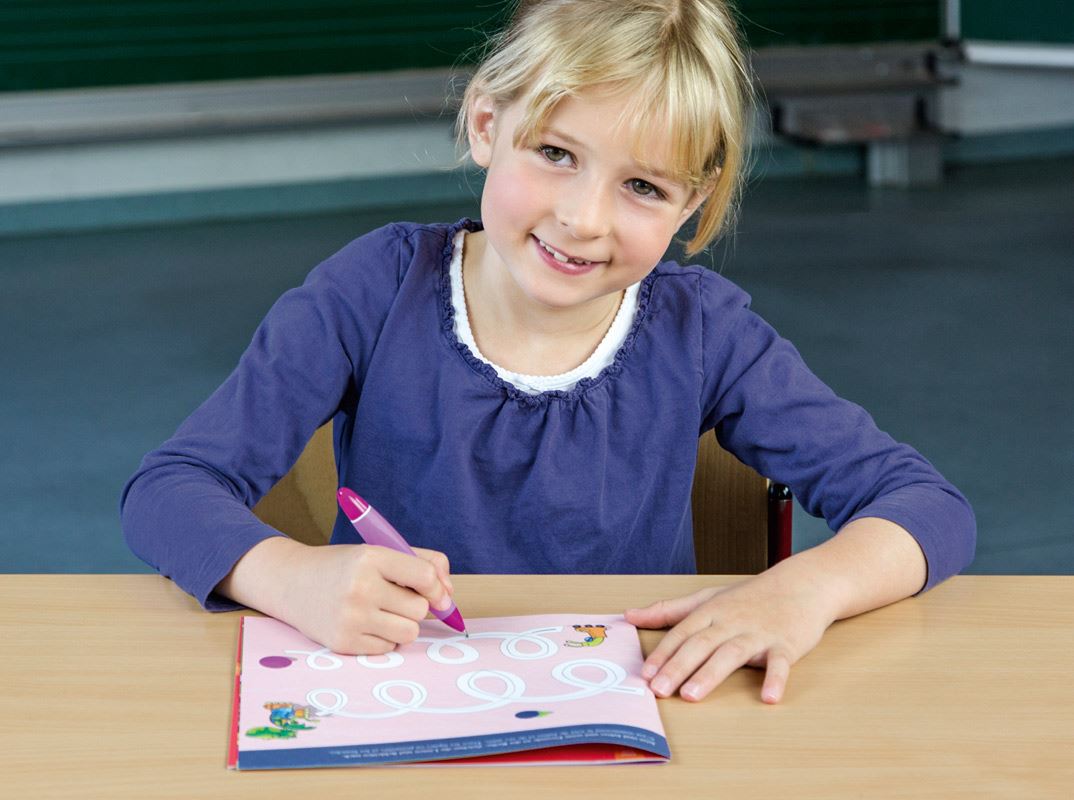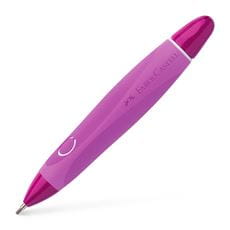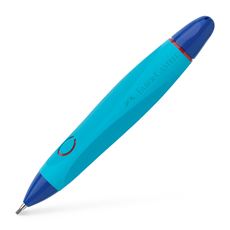
Once the gross motor skills of your child have developed, he or she will refine his or her motor skills during their first years of life. Well developed fine motor skills lay the foundation for your child’s ability to learn to write and facilitate this learning process – e.g. your child will practise these fine motor skills in a fun way when playing with beads and thread, kneading modelling clay, tying a bow and doing crafts.

By encouraging your child to do preparatory exercises you give him/her the possibility of practising the sequence of hand movements during writing. In this context, you should ask your child to make large movements involving the whole arm. If he or she has plenty of space and a large sheet of paper, they will get a feel for the motion sequences involved without tensing up their muscles.
These motions will become increasingly refined by involving the whole hand and – later on – purposeful movements of the fingers. So-called exercises for practising smooth and even pencil movements will help your child learn the sequence of hand/wrist movements during writing. He or she should also get a feel for the writing rhythm, because when writing, we permanently switch between swift strokes and short breaks. Don’t hesitate to stimulate your child’s enthusiasm and curiosity for discovering the world of letters, as learning to write will enhance the overall development of your offspring.
These motions will become increasingly refined by involving the whole hand and – later on – purposeful movements of the fingers. So-called exercises for practising smooth and even pencil movements will help your child learn the sequence of hand/wrist movements during writing. He or she should also get a feel for the writing rhythm, because when writing, we permanently switch between swift strokes and short breaks. Don’t hesitate to stimulate your child’s enthusiasm and curiosity for discovering the world of letters, as learning to write will enhance the overall development of your offspring.



